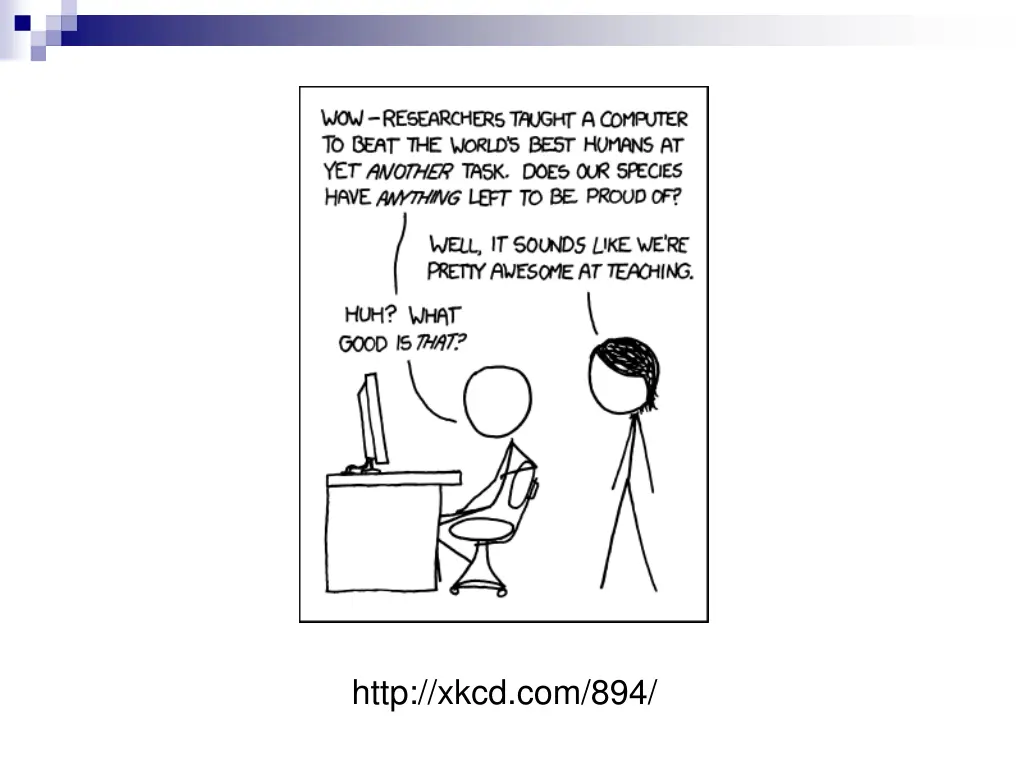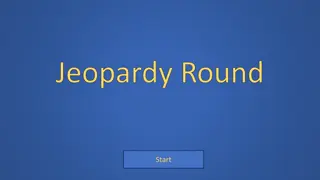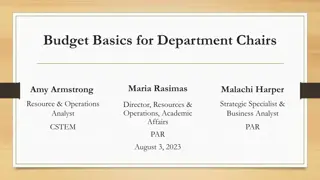
Exploring Neural Networks and Our Nervous System
Dive into the fascinating world of neural networks and the human nervous system. Discover how neural networks mimic our brain's function, compare neuron firing to computer processes, and explore the speed and complexity of our brains in relation to machines.
Download Presentation

Please find below an Image/Link to download the presentation.
The content on the website is provided AS IS for your information and personal use only. It may not be sold, licensed, or shared on other websites without obtaining consent from the author. If you encounter any issues during the download, it is possible that the publisher has removed the file from their server.
You are allowed to download the files provided on this website for personal or commercial use, subject to the condition that they are used lawfully. All files are the property of their respective owners.
The content on the website is provided AS IS for your information and personal use only. It may not be sold, licensed, or shared on other websites without obtaining consent from the author.
E N D
Presentation Transcript
Neural Networks David Kauchak CS51A Spring 2019
Neural Networks Neural Networks try to mimic the structure and function of our nervous system People like biologically motivated approaches
Our Nervous System Neuron What do you know?
Our nervous system: the computer science view the human brain is a large collection of interconnected neurons a NEURON is a brain cell they collect, process, and disseminate electrical signals they are connected via synapses they FIRE depending on the conditions of the neighboring neurons
Our nervous system The human brain contains ~1011 (100 billion) neurons each neuron is connected to ~104 (10,000) other neurons Neurons can fire as fast as 10-3 seconds How does this compare to a computer?
Man vs. Machine 1011 neurons 1011 neurons 1014 synapses 10-3 cycle time 1010 transistors 1011 bits of ram/memory 1013 bits on disk 10-9 cycle time
Brains are still pretty fast Who is this?
Brains are still pretty fast If you were me, you d be able to identify this person in 10-1 (1/10) s! Given a neuron firing time of 10-3 s, how many neurons in sequence could fire in this time? A few hundred What are possible explanations? either neurons are performing some very complicated computations brain is taking advantage of the massive parallelization (remember, neurons are connected ~10,000 other neurons)
Artificial Neural Networks Node (Neuron) Edge (synapses) our approximation
Node A Node B Weight w (neuron) (neuron) W is the strength of signal sent between A and B. If A fires and w is positive, then A stimulatesB. If A fires and w is negative, then A inhibitsB.
A given neuron has many, many connecting, input neurons If a neuron is stimulated enough, then it also fires How much stimulation is required is determined by its threshold
A Single Neuron/Perceptron Input x1 Each input contributes: xi * wi Weight w1 Weight w2 Input x2 g(in) Output y threshold function Input x3 Weight w3 i in = wi xi Weight w4 Input x4
Possible threshold functions hard threshold if x threshold otherwise 1 0 g(x)= sigmoid 1 g(x) = 1+e-ax
A Single Neuron/Perceptron 1 1 ? -1 1 0 1 Threshold of 1 0.5 1
A Single Neuron/Perceptron 1 1 ? -1 1 0 1 Threshold of 1 0.5 1 1*1 + 1*-1 + 0*1 + 1*0.5 = 0.5
A Single Neuron/Perceptron 1 1 0 -1 1 Weighted sum is 0.5, which is not larger than the threshold 0 1 Threshold of 1 0.5 1
A Single Neuron/Perceptron 1 1 ? -1 0 0 1 Threshold of 1 0.5 1 1*1 + 0*-1 + 0*1 + 1*0.5 = 1.5
A Single Neuron/Perceptron 1 1 1 -1 0 Weighted sum is 1.5, which is larger than the threshold 0 1 Threshold of 1 0.5 1
Neural network inputs Individual perceptrons/ neurons
Neural network some inputs are provided/entered inputs
Neural network inputs each perceptron computes and calculates an answer
Neural network inputs those answers become inputs for the next level
Neural network inputs finally get the answer after all levels compute
Neural networks Different kinds/characteristics of networks inputs inputs inputs How are these different?
Neural networks inputs inputs hidden units/layer Feed forward networks
Neural networks inputs Recurrent network Output is fed back to input Can support memory! How?
History of Neural Networks McCulloch and Pitts (1943) introduced model of artificial neurons and suggested they could learn Hebb (1949) Simple updating rule for learning Rosenblatt (1962) - the perceptron model Minsky and Papert (1969) wrote Perceptrons Bryson and Ho (1969, but largely ignored until 1980s--Rosenblatt) invented back-propagation learning for multilayer networks
Training the perceptron First wave in neural networks in the 1960 s Single neuron Trainable: its threshold and input weights can be modified If the neuron doesn t give the desired output, then it has made a mistake Input weights and threshold can be changed according to a learning algorithm
Examples - Logical operators AND if all inputs are 1, return 1, otherwise return 0 OR if at least one input is 1, return 1, otherwise return 0 NOT return the opposite of the input XOR if exactly one input is 1, then return 1, otherwise return 0
AND x1 x2 x1 and x2 0 0 0 0 1 0 1 0 0 1 1 1
x1 0 0 1 1 x2 0 1 0 1 x1 and x2 0 0 0 1 AND Input x1 W1 = ? Output y T = ? Input x2 W2 = ?
x1 0 0 1 1 x2 0 1 0 1 x1 and x2 0 0 0 1 AND Input x1 W1 = 1 Output y T = 2 Output is 1 only if all inputs are 1 Input x2 W2 = 1 Inputs are either 0 or 1
AND Input x1 W1 = ? W2 = ? Input x2 Output y T = ? Input x3 W3 = ? W4 = ? Input x4
AND Input x1 W1 = 1 W2 = 1 Input x2 Output y T = 4 Output is 1 only if all inputs are 1 Input x3 W3 = 1 W4 = 1 Input x4 Inputs are either 0 or 1
OR x1 x2 x1 or x2 0 0 0 0 1 1 1 0 1 1 1 1
x1 x2 x1 or x2 OR 0 0 0 0 1 1 Input x1 1 0 1 W1 = ? 1 1 1 Output y T = ? Input x2 W2 = ?
x1 x2 x1 or x2 OR 0 0 0 0 1 1 Input x1 1 0 1 W1 = 1 1 1 1 Output y T = 1 Output is 1 if at least 1 input is 1 Input x2 W2 = 1 Inputs are either 0 or 1
OR Input x1 W1 = ? W2 = ? Input x2 Output y T = ? Input x3 W3 = ? W4 = ? Input x4
OR Input x1 W1 = 1 W2 = 1 Input x2 Output y T = 1 Output is 1 if at least 1 input is 1 Input x3 W3 = 1 W4 = 1 Input x4 Inputs are either 0 or 1
NOT x1 not x1 0 1 1 0
x1 0 1 not x1 1 0 NOT W1 = ? Input x1 T = ? Output y
NOT W1 = -1 Input x1 T = 0 Output y If input is 1, output is 0. If input is 0, output is 1. Input is either 0 or 1
How about x1 x2 x3 x1 and x2 1 0 0 0 Input x1 w1 = ? 0 1 0 0 w2 = ? 1 0 0 1 Input x2 Output y T = ? 1 1 0 0 Input x3 w3 = ? 0 0 1 1 0 1 1 1 1 0 1 1 1 1 1 0
Training neural networks Learn individual node parameters (e.g. threshold) Learn the individual weights between nodes
Positive or negative? NEGATIVE
Positive or negative? NEGATIVE
Positive or negative? POSITIVE
Positive or negative? NEGATIVE
Positive or negative? POSITIVE






















